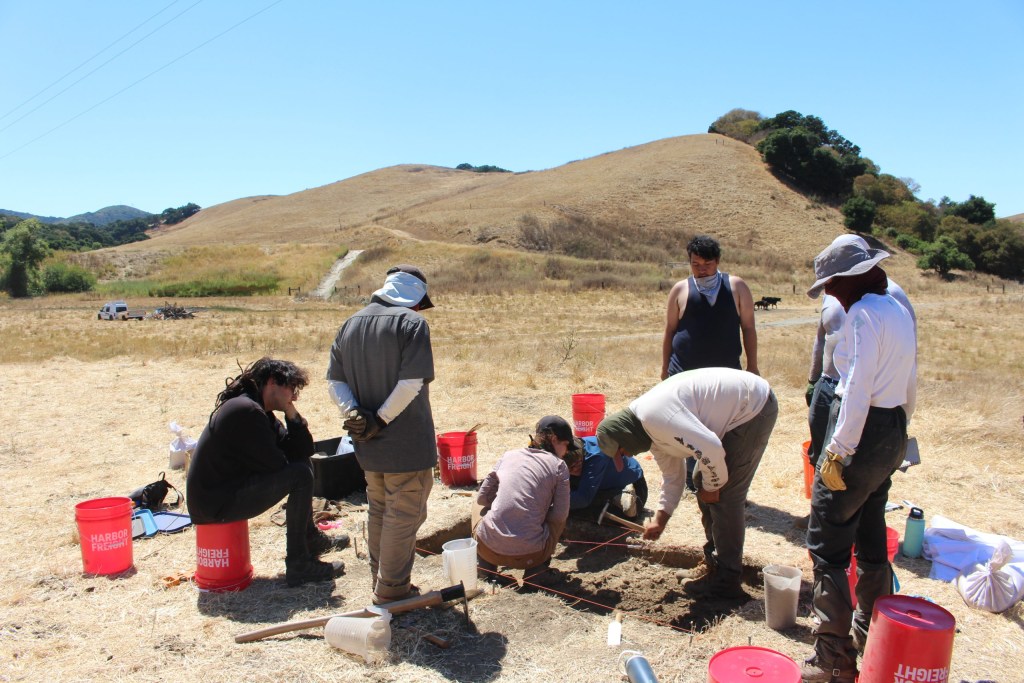 Lea este artículo en español aquí.
Lea este artículo en español aquí.
In a dispute with the Amah Mutsun Tribal Band, the California Indian Nation filed a lawsuit against California’s Native American Heritage Commission seeking to be added to the state’s list of Native American tribes and have the Amah Mutsun removed from that list.
At the heart of the lawsuit is a dispute with the Amah Mutsun over who is a legitimate descendant of the Indigenous peoples who once lived in what is now San Benito County and the surrounding lands.
A proposed development on Betabel Road is also on the periphery of the dispute.
The California Indian Nation is an organization that says it was formed to “defend the historical integrity, cultural identity and land rights” of California Indian families.
In its lawsuit, the organization accuses the state’s commission of failing to maintain an accurate list of Native American tribes in California, alleging it has refused to consider the organization’s petition for inclusion while keeping the Amah Mutsun on the list.
That list is important because it determines which tribes can take part in consultations with local governments in planning decisions.
In its petition, the California Indian Nation asks to be formally added and for the Amah Mutsun to be removed, arguing that the Amah Mutsun have not provided proper documentation proving their descent from a historical Indigenous tribe.
“The name ‘Amah Mutsun’ does not appear in mission records, California Indian census records, or official documents from Spanish, Mexican, or early U.S. governance in California,” Marciano Lopez, Chief Executive Officer and Board President of the California Indian Nation, wrote to BenitoLink. “Historical archives and lineage-based data show no evidence of a continuous community, leadership, or descent. The group’s identity was constructed in recent decades and is not supported by verifiable historical or genealogical documentation.”
To prove its own legitimacy, the organization says it has birth and death certificates showing that its members descend from individuals listed on the California Indian Census Rolls of 1928 and on the Mission rolls. The Amah Mutsun, it says, doesn’t.
According to the lawsuit, the “‘best’ evidence that tribal members are descended from a historical California Native American tribe is certified birth or death certificates documenting descent from individuals on the California Indian Census Rolls of 1928 or 1933, on the California Judgment Fund Rolls of 1953 or 1972, or on the California Mission rolls.”
The Amah Mutsun have disputed those claims, saying they are the descendants of local Mutsun and Awaswas who survived the San Juan Bautista and Santa Cruz missions. Chair Valentin Lopez has described attempts to challenge their legitimacy as “a red herring.”
“Like many other California tribes, the Amah Mutsun Tribal Band—previously known as the “San Juan Band”—adopted a new name in recent decades, to more appropriately honor our ancestors and incorporate the Mutsun language,” Lopez wrote to BenitoLink. “This in no way diminishes the historic continuity of our tribe.”
Lopez has also said the California Indian Nation’s position is “an effort to sway public opinion” and intimidate opponents of the Betabel Road project, a planned visitor center, fruit stand, gas station, and motel along Highway 101. The claim stems from the fact that attorneys for the California Indian Nation are the same lawyers representing Ryder and Victoria McDowell, the property owners behind the project.
Sara Clark, an attorney for the Amah Mutsun Tribal Band, told BenitoLink there is no basis to doubt the tribe’s legitimacy and that the tribe expects the lawsuit to be dismissed. She said that this case is connected to the pending lawsuit against the Betabel Road project.
In Dec. 2022, the Amah Mutsun, along with Protect San Benito County and the Center for Biological Diversity, sued the county, alleging it had violated state planning and zoning laws by not consulting with the tribe. Since then, the project has been tied up in litigation, and even Attorney General Rob Bonta has gotten involved, siding with the Amah Mutsun and saying the county and the developer had “rushed” the tribal consultation process.
Clark noted the overlap between the two cases.
“The developer’s attorney linked the two cases together in a court filing this summer, stating that if the California Indian Nation suit is successful, it would ‘moot the petitions filed by Amah Mutsun Tribal Band’ in the Betabel case,’” she told BenitoLink. “It’s clear that the developer’s attorneys filed this frivolous and underhanded lawsuit in an attempt to avoid judicial review of the Betabel approval.”
Peter Prows, the attorney representing the California Indian Nation and the McDowells, said “they are separate clients with separate interests.” He called pointing out this connection “a distraction from the case.”
The lawsuit was filed in the California Superior Court in Sacramento. The next step is for the Native American Heritage Commission to respond, which, Prows said, should happen within a couple of weeks.
 100vw, 780px”><figcaption class=) The Amah Mutsun, some of whom are seen during the Larios Adobe dig, say they are the descendants of local Mutsun and Awaswas who survived the San Juan Bautista and Santa Cruz missions. Photo by Juan Pablo Pérez Burgos.
The Amah Mutsun, some of whom are seen during the Larios Adobe dig, say they are the descendants of local Mutsun and Awaswas who survived the San Juan Bautista and Santa Cruz missions. Photo by Juan Pablo Pérez Burgos.We need your help. Support local, nonprofit news! BenitoLink is a nonprofit news website that reports on San Benito County. Our team is committed to this community and providing essential, accurate information to our fellow residents. It is expensive to produce local news and community support is what keeps the news flowing. Please consider supporting BenitoLink, San Benito County’s public service, nonprofit news.
The post California Indian Nation sues state over dispute with Amah Mutsun Tribal Band appeared first on BenitoLink.

